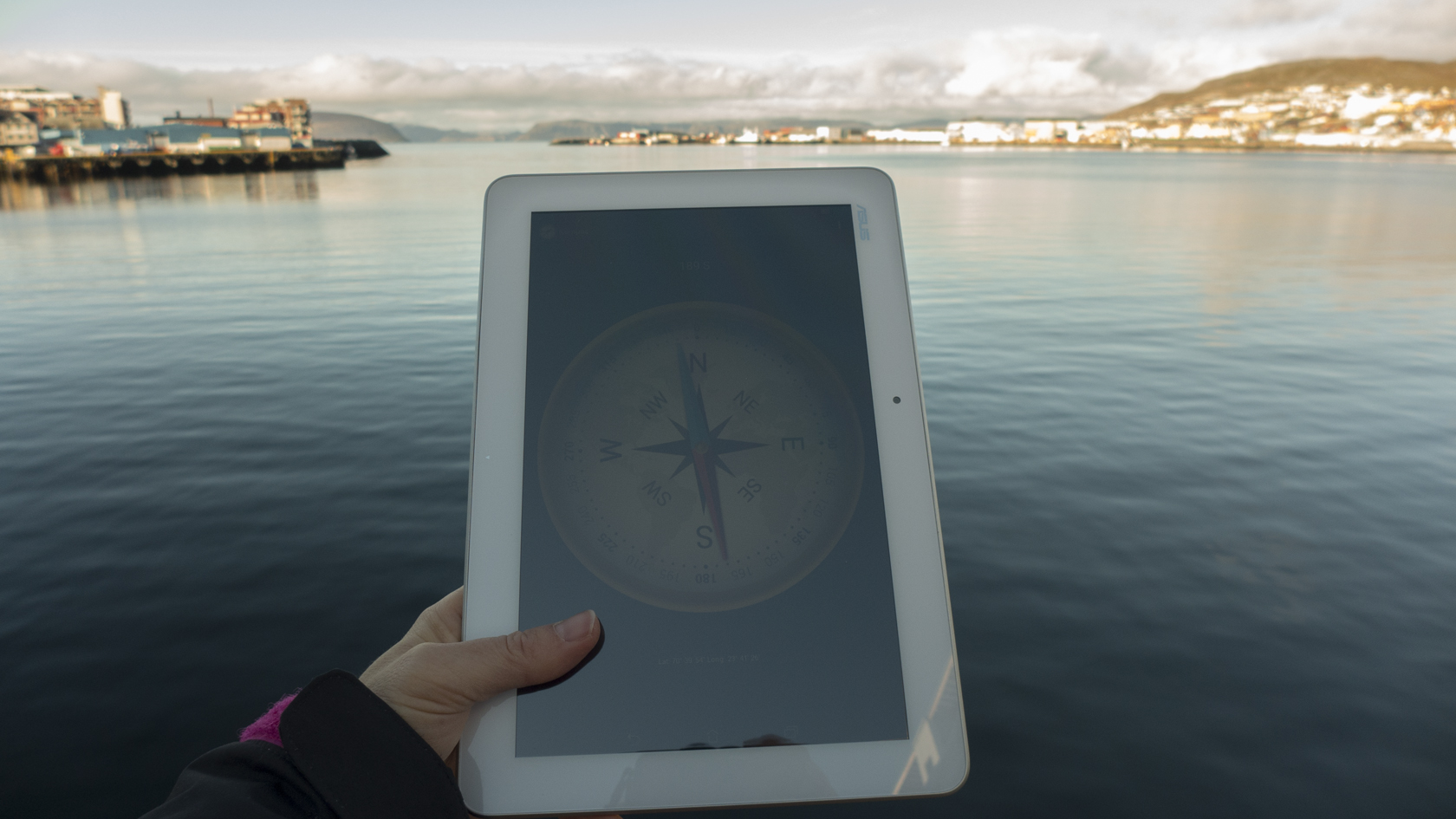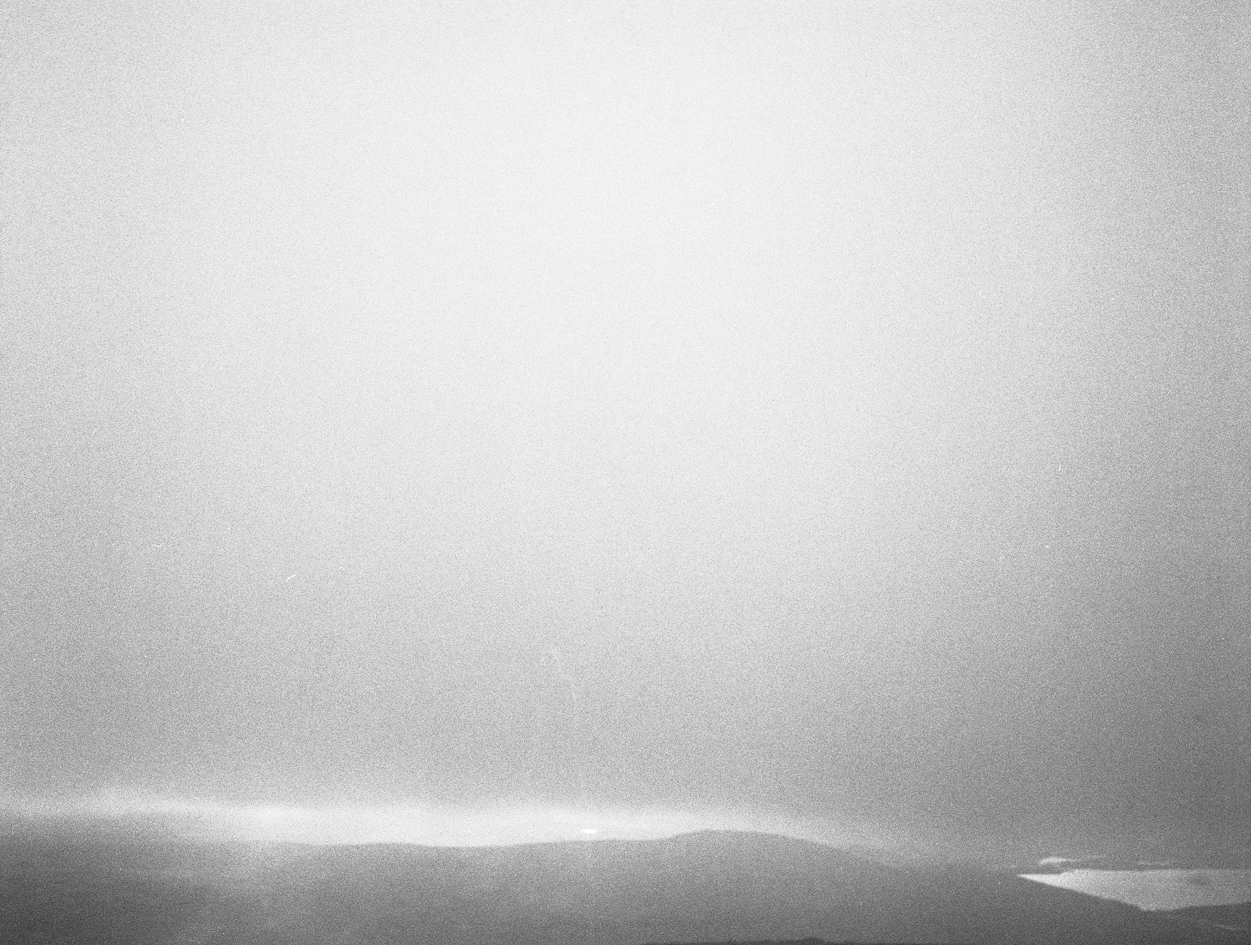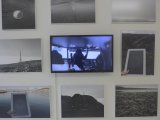Upside-down on Earth
2015
from the series Upside-down on Earth. Project Frontiers of Solitude, Finmark, Norway. Photographs, video.

Upside-down on Earth
Gal dan oažžu jáhkkit, gii dáhttu
The one who wants to believe it, may well do so*
The journey led north. “North” keeps shifting. For residents of Oslo, north is somewhere in the middle of Norway in Trondheim, for residents of Trondheim it is somewhere in Alta, and in Alta it has shifted even further to the north. Kautokeino. This is where our expedition starts, although residents of Oslo rarely make it this far.
This is the land of the original “Sami.” Here, the map is turned upside-down. It is a land of reindeer herders and fishermen, with an average of 0.3 residents per square kilometer. When, thanks to a presentation by Ol Johan Gaup, we learned more about their history, culture, and current traditions, I began to see confirmation of how far our contemporary way of life is removed from theirs. Things that have always been natural suddenly strike us as eccentric. Is it cold? Start a fire and cover yourself in reindeer skin. Are you hungry? Kill the oldest reindeer. Feel like a treat? Make yourself some reindeer blood pancakes (we tried some). Want to take your dog for a walk? Go ahead, but be careful that your dog isn’t carried off by an eagle. And so on. I feel like I’m on a different planet. I am amazed at the local awareness and natural respect for nature, which is something all of us should possess. I learn that reindeer paws are soft and adapted so that when the animals take a step, the weight is spread out and the plants bend only slightly under their weight. Reindeer are also missing their front teeth, so that when they chew something they only nibble on it gently with their gums. Nature is loved here, and the dependence on nature is more than clear. And its disturbance through resource extraction and its serious impacts on the original environment stands out in even greater contrast. The landscape of abandoned mines in Kautokeino resembles the landscape of another planet on which nobody expects to find any more life.
Cut. We are traveling further north towards one of the last places on our expedition – Kirkenes on the Russian border. In this region, the latest technologies are used to mine iron ore, oil, and natural gas. Every year, the waste products from this wealth of resources – on average, two millions tons of toxic waste – are “inconspicuously” deposited on the bottom of the sea. As a result of this mining, the landscape here is upside-down not only on land, but also beneath the surface of the ocean. A mining pit becomes a mountain, and a mountain of waste is transferred to the bottom of the sea. Contaminated fauna and flora. Why doesn’t anyone stop it? Again, I am amazed at how people can forget their original relationship to nature. Again, I feel like I’m on a different planet, a planet of inverted models of behavior.
Not far from here in Games, an expansive territory not near the Kirkenes airport, the Nor Terminal mining company has decided to start drilling for oil and gas. However, the first exploratory drilling unexpectedly came up with prehistoric stone carvings, and so it had to be stopped. Maybe, in an instinctual act of self-preservation, the planet has begun to defend itself? The exciting question arises: Can prehistoric paintings stop mining? If only art could be used as a defensive weapon.
The series of photographs and video sequences are directly inspired by this question, by the motif of “inversion/reversing,” and by presenting people’s relationship to the Earth through the eyes of an extraterrestrial. The individual shots – close-ups as well as full landscapes – combine to form a mosaic of various places from the north of Norway. They do not make any direct references to specific locations, instead presenting a general view of the Earth as seen through an inverted hierarchy of values and a reversed polarity of interest. One important aspect when creating the visuals is the question of time in the sense of duration and temporariness – the landscape is shaped over the long term, and this time influences man’s relationship to it. Despite this, other people treat the landscape with such force and with such short-term goals as if they were going against time in leaps and bounds.
For me, the expedition’s name “Frontiers of Solitude” took on new meaning after having been on it. I found myself on the boundary of a rupture in space-time. The original person remained standing and the landscape all around was shifted in time and in space. I see the photographic series and video sequence as an ideal medium for capturing this inversion, flowing, and stoppage of time.
Jođi lea buoret go oru
Time Is a Ship That Never Casts Anchor *
* From the publication Jođi lea buoret go oru – Sátnevádjasat, Harald Gaski (ed.), ČálliidLágádus, 2003. (Sami proverbs collected by J. Qvigstad, 1922)
Alena Kotzmannová


